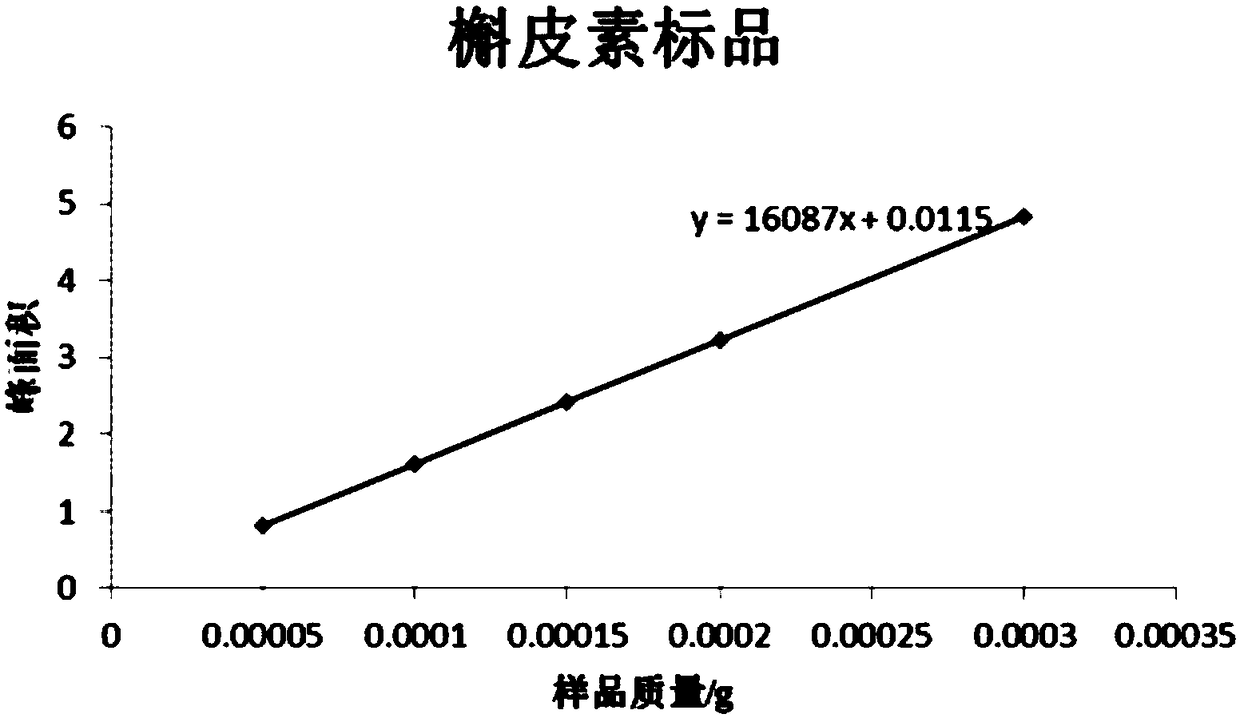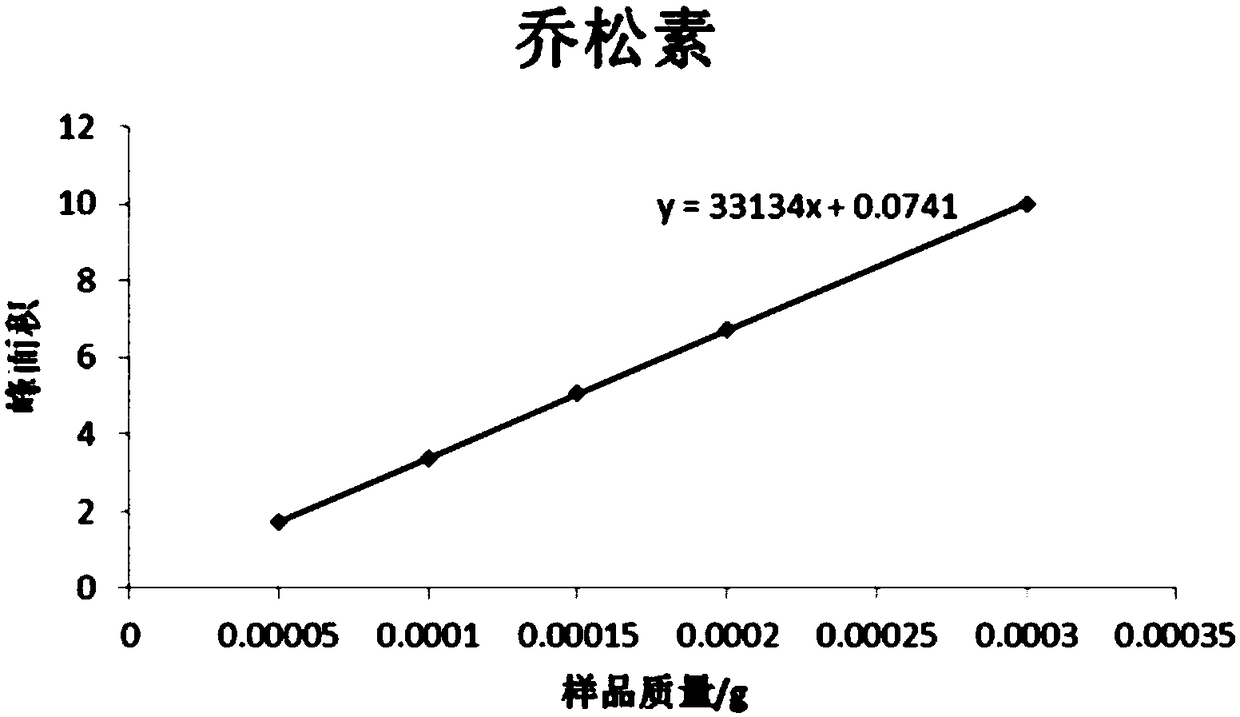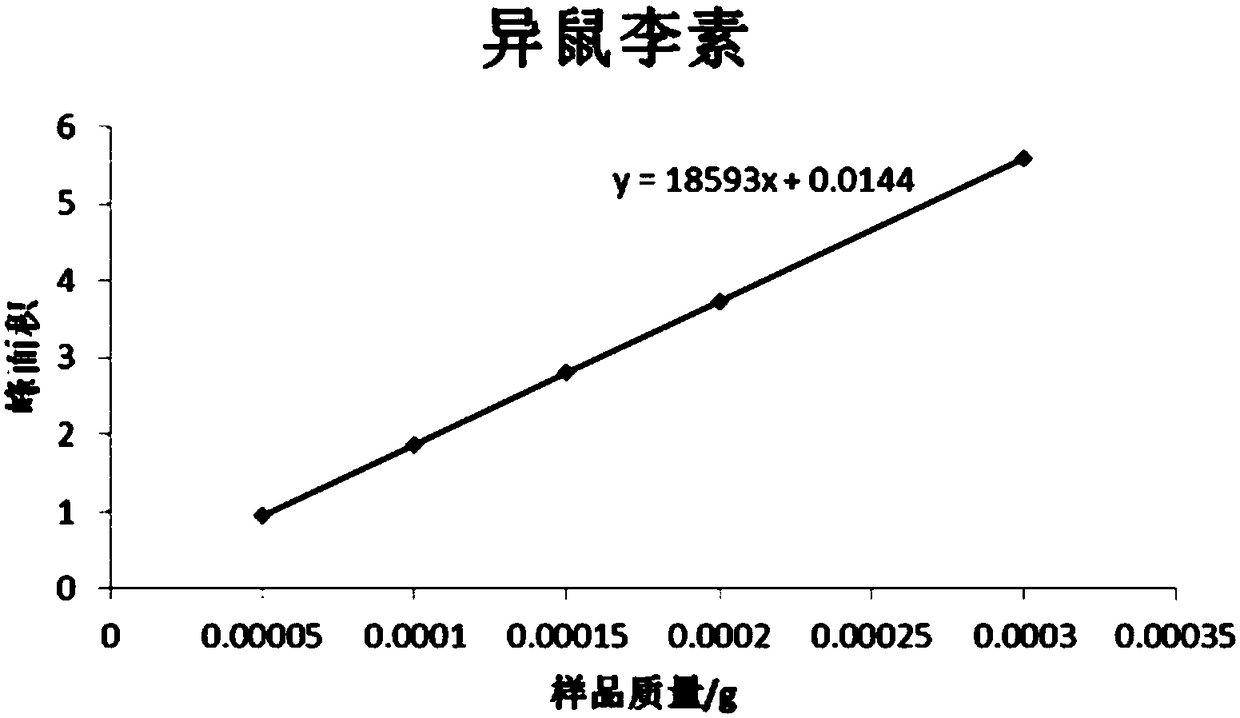Method for extracting and detecting flavonoids from galangal
An extraction method and detection method technology, applied in the field of natural compound extraction, can solve the problems of increased safety hazards, increased steps, residues, etc., and achieve the effects of good repeatability, high sensitivity, simple and efficient operation
- Summary
- Abstract
- Description
- Claims
- Application Information
AI Technical Summary
Problems solved by technology
Method used
Image
Examples
Embodiment 1
[0052] 1. Test method
[0053] 1.1 Pretreatment of galangal
[0054] Put the purchased galangal into a grinder for crushing, and then pour it into different purpose sieves to sieve. Four different purpose samples were obtained sequentially: 41-51 mesh, 51-69 mesh, 69-91 mesh, and less than 91 mesh. Theoretically speaking, the finer the particle size of the medicinal material, the better the extraction effect, but in reality, the particle size of the traditional Chinese medicinal material is too fine, which will increase the difficulty of subsequent operations during the experiment. Therefore, this application uses galangal less than 51 mesh for the experimental operation.
[0055] 1.2 Preparation of standard solution
[0056] Weigh 0.001g standard samples of each of quercetin, joconin, isorhamnetin, kaempferol, kaempferol, curcumin, and galangin, dissolve them in methanol, and set the volume to a 10mL colorimetric tube. Shake well and perform ultrasonic treatment. After the...
Embodiment 2
[0074] Select less than 51 mesh, weigh about 0.2000g of galangal crushed sample, add it to the subcritical extraction reaction kettle, then add 4.5mL deionized water, react at 130°C for 10min, open the reaction kettle and rinse the inner liner with methanol several times The solution. Pour the rinsed solution completely into a 10mL colorimetric tube and dilute to 10mL with methanol. After shaking well and standing still, take the supernatant, filter through a 0.45 μm water film membrane to obtain a sample solution, and perform HPLC detection. The test results showed that the extraction rate of quercetin was 0.0060, that of kaempferol was 0.0134, that of isorhamnetin was 0.0026, that of chopinenin was 0.0199, that of galangin was 0.4223, that of kaempferol was 0.0875, and that of curcumin was 0.0016.
Embodiment 3
[0076] Select less than 51 mesh, weigh about 0.2000g of galangal crushed sample, add it to the subcritical extraction reaction kettle, then add 4.5mL deionized water, react at 140°C for 10min, open the reaction kettle and rinse the inner tube with methanol several times The solution. Pour the rinsed solution completely into a 10mL colorimetric tube and dilute to 10mL with methanol. After shaking well and standing still, take the supernatant, filter through a 0.45 μm water film membrane to obtain a sample solution, and perform HPLC detection. The test results showed that the extraction rate of quercetin was 0.0068, that of kaempferol was 0.0131, that of isorhamnetin was 0.0049, that of chopinenin was 0.0191, that of galangin was 0.3465, that of kaempferol was 0.0702, and that of curcumin was 0.0010.
[0077] Example 3
[0078]Select less than 51 mesh, weigh about 0.2000g of galangal crushed sample, add it to the subcritical extraction reaction kettle, then add 4.5mL deionized...
PUM
| Property | Measurement | Unit |
|---|---|---|
| Granularity | aaaaa | aaaaa |
| Granularity | aaaaa | aaaaa |
Abstract
Description
Claims
Application Information
 Login to View More
Login to View More - R&D
- Intellectual Property
- Life Sciences
- Materials
- Tech Scout
- Unparalleled Data Quality
- Higher Quality Content
- 60% Fewer Hallucinations
Browse by: Latest US Patents, China's latest patents, Technical Efficacy Thesaurus, Application Domain, Technology Topic, Popular Technical Reports.
© 2025 PatSnap. All rights reserved.Legal|Privacy policy|Modern Slavery Act Transparency Statement|Sitemap|About US| Contact US: help@patsnap.com



